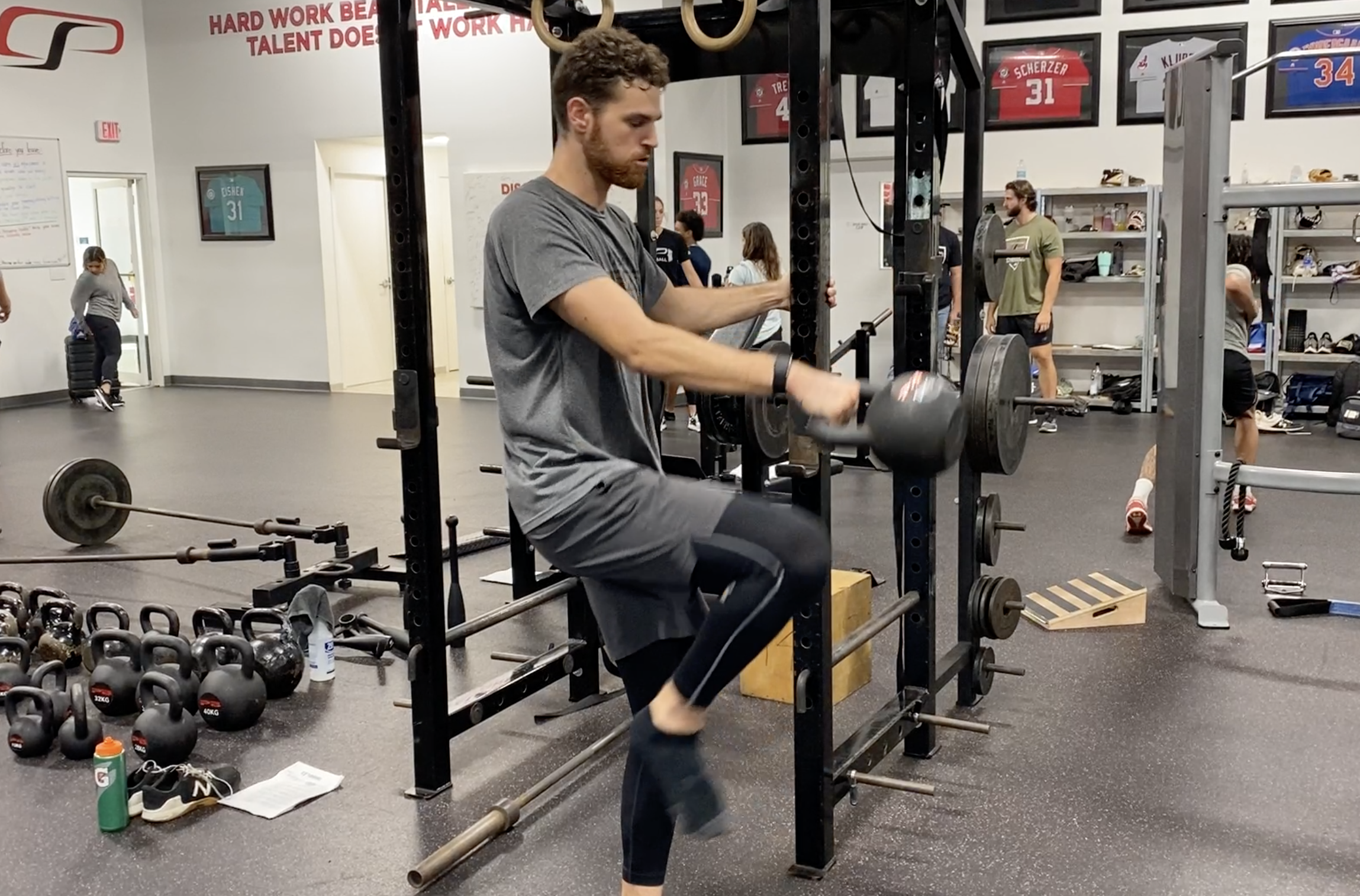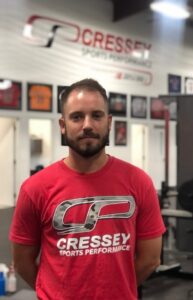
Exercise of the Week: 1-Arm, 1-Leg Kettlebell Swing with Rack Assistance
Today’s guest post comes from Cressey Sports Performance – Florida coach, Josh Kuester.
In some cases, baseball players (especially pitchers) are told that they are fragile, and consequently a heavy dose of “corrective exercises” are handed out. But throwing a baseball is the fastest motion in sports, and hitting a baseball might be the most challenging task in all of sports. Baseball players are not merely finesse athletes; they are power athletes. I love integrating exercises that challenge both of these ends of the spectrum to some degree, and the 1-arm, 1-leg Kettlebell Swing with Rack Assistance is a perfect example.
Here are four reasons why I like this exercises with some of my thoughts as to how I might implement this variation with athletes:
1. Beauty in Simplicity
For coaches who train large groups of athletes with limited time (and/or resources), you understand that there is beauty in simplicity. Additionally, for baseball players, I think simplicity in the weight room is really important because their sport is highly complex. For a long time, CSP has been implementing medicine ball training as a staple for power development. There are numerous benefits to medicine ball training: plane specific power, fascial system development, lower and upper half connection. However, one element that might be overlooked is that throwing a medicine ball is relatively simple, and simple exercises have higher intent. The learning curve on the 1-Arm, 1-Leg KB Swing with Rack Assistance is very low and allows athletes to move a moderate load on a single leg with high intensity.
2. Unilateral and Sagittal Power Development
While the 1-Arm, 1-Leg KB Swing with Rack Assistance is more of a sagittal plane exercise, it is a unilateral variation and baseball is a unilateral sport. Additionally, in the early to mid-off season, we are not aggressively going after large volumes of transverse plane power development. In many cases, we are re-establishing sagittal plane mechanics before progressing to more frontal and transverse plane power exercises later in the off-season.
3. Contrast Training
Contrast training is something that we use at CSP from time to time. In short, contrast training is using a variety of exercises (anywhere from 2-4) that hit different points on the force/velocity curve to potentiate the neuromuscular system to produce more force. I like this variation because it fits in the rather large gap between absolute strength and absolute speed on the force-velocity cure.
This variation will fit nicely in a contrast training cluster of:
1. Safety Squat Bar Split-Squat from Pins
2. 1-Arm, 1-Leg KB Swing with Rack Assistance
3. Split-Squat Cycle Jumps
4. Band-Assisted Split Squat Cycle Jumps
Or:
1. 1-Arm, 1-Leg KB Swing with Rack Assistance
2. 1-Leg Broad Jump with 2-Leg Stick
4. Heel Connection
Pitchers and hitters alike often discuss the concept of “heel connection” and wanting to feel the ground. Staying connected in the back hip allows for better sequencing of hip and thoracic rotation when throwing/hitting, which results in more efficient transfer of energy from back-side to front-side. If an athlete gets into the ball of their foot too early, it can influence the magnitude and direction in which they apply force. I love this variation because it forces the athlete to feel the ground, and because the load is moderate, it forces the athlete to have heel reference; otherwise they will lose balance.
Final Thoughts on Performing and Implementing this Exercise
1. This is an exercise that I would only use for an athlete with a moderate to high training
age.
2. Pick a weight that you would use for a single leg RDL.
3. The added stability of holding the rack allows for high intent/speed with a moderate load.
4. The stabilizing hand should be just above hip height.
5. I prefer to have athletes perform this barefoot or in minimalist sneakers so that the athlete can feel the ground.
About the Author
Josh Kuester serves as a Strength and Conditioning Coach at CSP-FL. He began his collegiate career playing baseball at DIII UW-Whitewater where he played middle infield. After an injury plagued freshman and sophomore season, he ended up pursuing his bachelors from the University of Wisconsin and his masters from UW-Stevens Point. He is a Certified Strength and Conditioning Specialist (CSCS), and a board-certified Athletic Trainer (ATC). He has been a strength coach at the high school and collegiate level. In addition, he has coached various ages of travel baseball for Impact Sports Academy, a club baseball program out of De Pere, Wisconsin. From the fall of 2020 to the spring 2021 he served as a Sports Medicine intern at Northwestern University where he primarily worked with the football team. You can follow him on Instagram at @JoshKuester.




